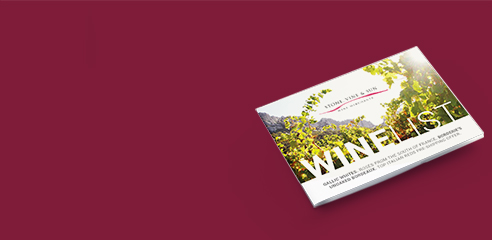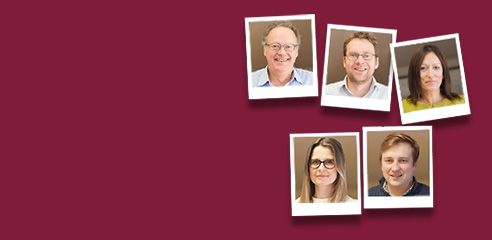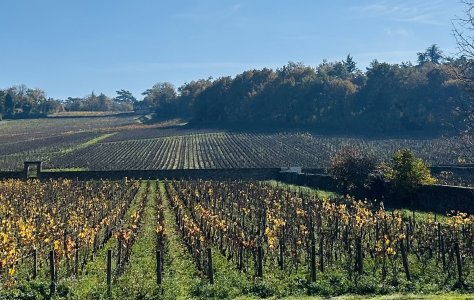The answer - the northern fringes of Burgundy
11th February 2022
The question is… where can one go to find reasonably priced Burgundy, especially white? After two short harvests in Burgundy - 2020, reduced by heat and drought - and the disaster of 2021, when the worst frosts since the 1950s cut the crop in half - what we can buy will arrive at much higher prices, and we already don’t have enough burgundy to satisfy a growing client base…..
The answer is to look north. As vignerons in the Côte d’Or struggle with ever increasing temperatures (honestly, there are now Grand Cru reds coming in at well over 15% of alcohol), it’s obvious that further to the north of Dijon, Chardonnay and Pinot Noir are ripening perfectly, in a more classical manner, in outlying historic pockets of vineyards. So, after the usual research (in particular Rosemary George’s The Wines of Chablis and the Grand Auxerrois and Guide Hachette), it was time last autumn to make a final run in the old Audi (which returned with 189,000 miles on the clock) and explore the region around Chablis. Historically Auxerre had flourished as a wine producing area, due to the ease of shipping down the Yonne to Paris, until phylloxera laid waste its vineyards in the late 19th century.
A 3.30am start in Hampshire allowed me a brief stop in Vézelay, a pretty hilltop town, home to one of the most beautiful churches in the world. Around lies a special landscape, recognised by Unesco, with small fields bordered by hedges, and offering a patchwork of forests, pasture and vines. Vinous Vézelay is a tiny (about 100 hectares of vines planted out of a possible 250) appellation, created only for Chardonnay in 2017 at the instigation of a dozen quality-minded growers and a small co-operative. So you won’t have heard of it and there will never be much wine around!
Here I tasted with Sophie and Thierry Woilez, who since 2009 have slowly accrued 15 organically farmed (certification with the 2021 vintage) hectares around La Croix Montjoie’s cellar in Tharoiseau, a hamlet just south-east of the hilltop town. This young couple are among the leaders of the appellation and sell a large proportion of their production direct to customers from their cellar. Here are Chardonnays of elegance and definition.
Focus the next day was on Irancy, a special micro-terroir - just 190 hectares in the appellation - for Pinot Noir. I first discovered red Irancy over thirty years ago at L’Esperance, the great restaurant run by the late Marc Meneau at Saint-Père-sous-Vézelay: it already had two stars and the kindly sommelier pointed me at it as about the only red burgundy I could afford!
My first visit in the sleepy village (yes, a caricature of La France Profonde) was to Domaine Ferrari. Seventeen years ago we shipped from the Ferrari family’s estate (then named Saint Germain) but as a fledgeling business we struggled to sell wines from a village no-one recognised. But Irancy is a sweet spot for Pinot, with most of the vines on the slopes of a broad amphitheatre facing south-east to south-west. Soils are Kimmeridgian marls with marine limestone (one can see fossils in the stones), ideal for the grape.
Domaine Ferrari - with son Nicolas taking over father Christophe, who began buying vineyards around the village in 1987 - is among the motors in the village. The style of the wines is traditional Burgundy: full-flavoured and ageworthy. They may not show the finesse of the finest of the Côte d’Or – but they are only a fraction of the price and have far more depth and interest than comparably priced Bourgogne Pinot Noir.
Third day: Chablis, and I began with the discoveries to be found in Clotilde Davenne’s cellar in the hamlet of Préhy, on the south-west edge of the Chablis appellation. Clotilde is a determined woman: without any vineyard inheritance she has worked her way up via winemaking at Brocard to assemble a mosaic of 18 hectares of vines across Chablis and the wider area, alongside an impressive negoçiant business. In particular it was fascinating to taste her wines from small parcels of ancient vines from nearby St Bris , a 75 year old parcel of Chardonnay labelled Côtes d’Auxerre, Très Vieilles Vignes; and Bourgogne Aligoté from even older vines.
I finished by tasting 2020 Chablis with the Fourreys in Milly, followed by lunch with the engaging Frédéric Prain (a veteran of 38 harvests; and a man so bright he makes puns in English) at Domaine d’Elise. Then it was back in the Audi for the long slog home and the expected Covid farce at the Channel tunnel terminal.
What do I think now the wines have arrived and been restated? There’s a distinct character to the Chardonnays – lots of fruit, to be sure, but tinged with an intriguing herbaceous note. And the Irancy Pinots? A tad rustic - but no more so than a lot of wines from St. Aubin, Santenay or Maranges - and pound for pound they really deliver. If you love burgundy, and aren’t a hedgie, you should look hard at this region.



